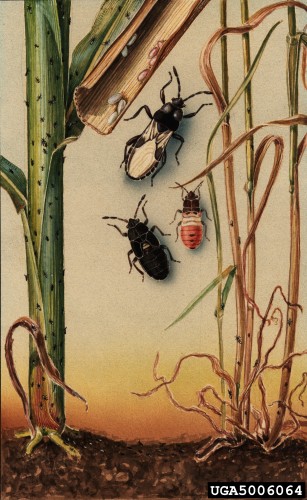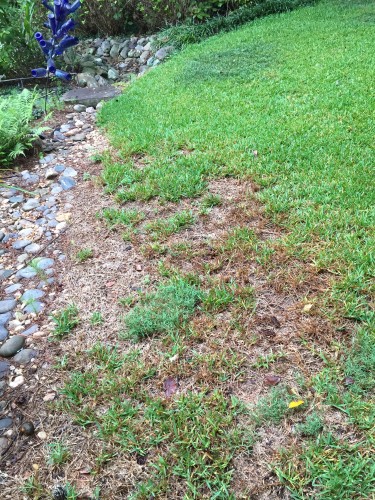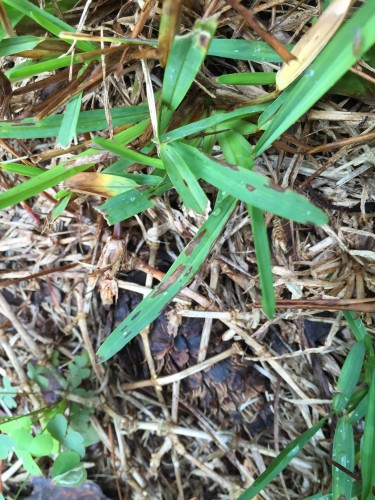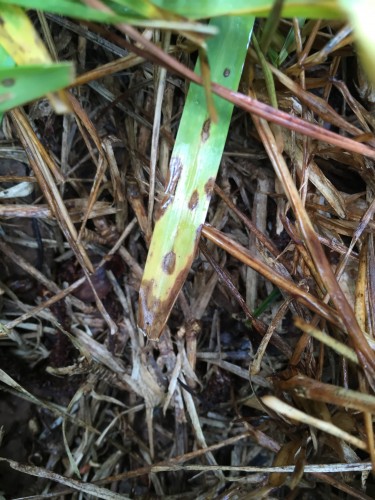





Q: We put in new St Augustine lawn in May. In September, I noticed some yellow patches. At first I thought chinch bugs so I put out insecticide. The spots are not solid yellow but have some green in it. Some are about 2 feet across, others are just a few inches. Now I see yellow dispersed here and there all over the yard. I don’t think it is low areas that hold water as we smoothed it out before we put down the sod and I do not see water standing. Any ideas?
A: It is extremely tough to diagnose lawn problems without actually seeing the lawn. You’ve given a good description of possible chinch bug damage. Now you get to be Sherlock Holmes and confirm it.
Adults are barely an eighth of an inch long. The body is dark but short white wings can be seen folded flat on top.
One way to detect them is to float them out of the grass. Cut both ends out of a gallon metal can and press one end firmly into the soil at a damaged spot. Slowly fill with water and count the number of chinch bugs that float to the top within 5 minutes. Add water to keep it above the grass surface. If nothing emerges in the first area, examine other trouble spots.
A second method is to mix up a gallon of water to which four tablespoons of lemon-scented dishwashing detergent has been added. Pour the mixture onto a small area at the edge of the yellow grass. Lay an old white towel over the spot and wait fifteen minutes. Chinch bugs, if present, will climb out of the grass and attach themselves to the towel in order to escape the soap.
Another, less labor-intensive option is to use a Dust Buster or hand-held vacuum cleaner to suck up chinch bugs near damaged areas. Remove the filter, dump the contents on a piece of white paper, and look for nymphs and adults. Repeat in several damaged areas.
There is a definite correlation between heavy fertilization and chinch bug damage. Plan to fertilize the lawn only in April and June. Apply iron sulfate in July to maintain green color without fertilizing.
If you discover chinch bugs apply lawn insecticide (click for sources). Keep in mind that there could be other causes of yellow spots in St. Augustine grass.
The web site below gives you more information for identification and control.
Chinch Bug Facts

Art Cushman, USDA; Property of the Smithsonian Institution, Department of Entomology, Bugwood.org



chinch bug feeding sites
Copyright © www.100flowers.win Botanic Garden All Rights Reserved